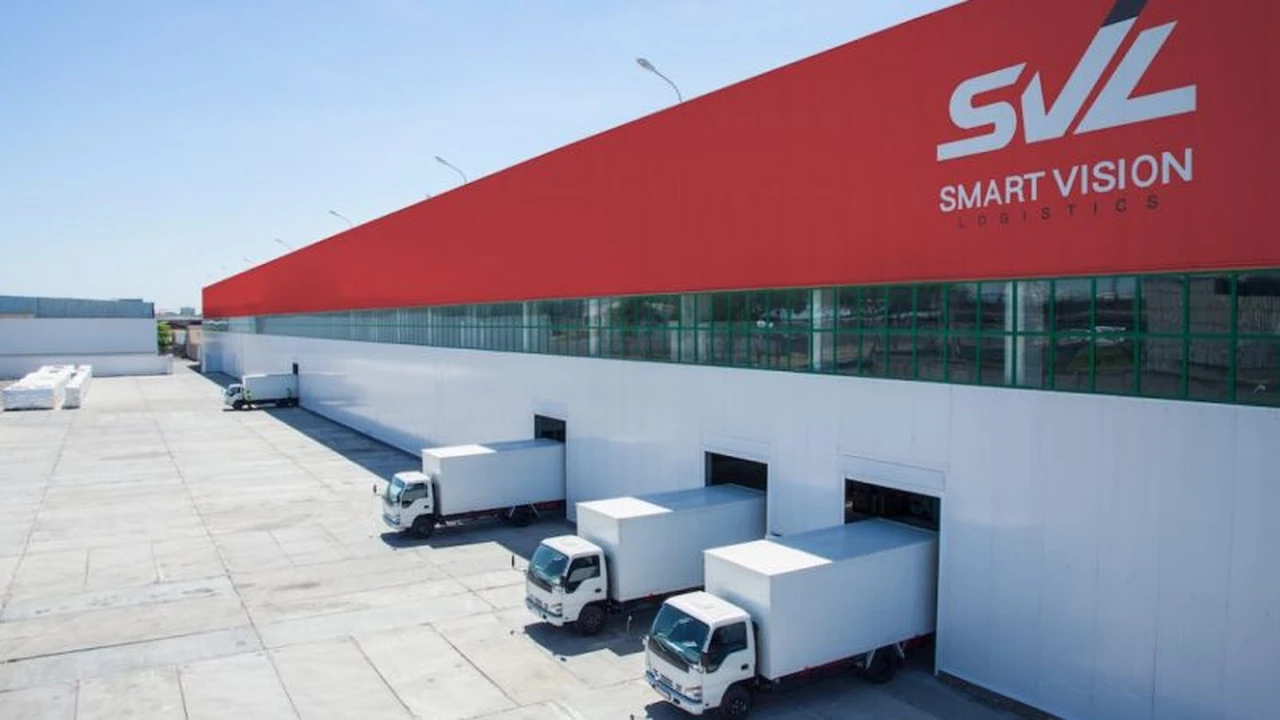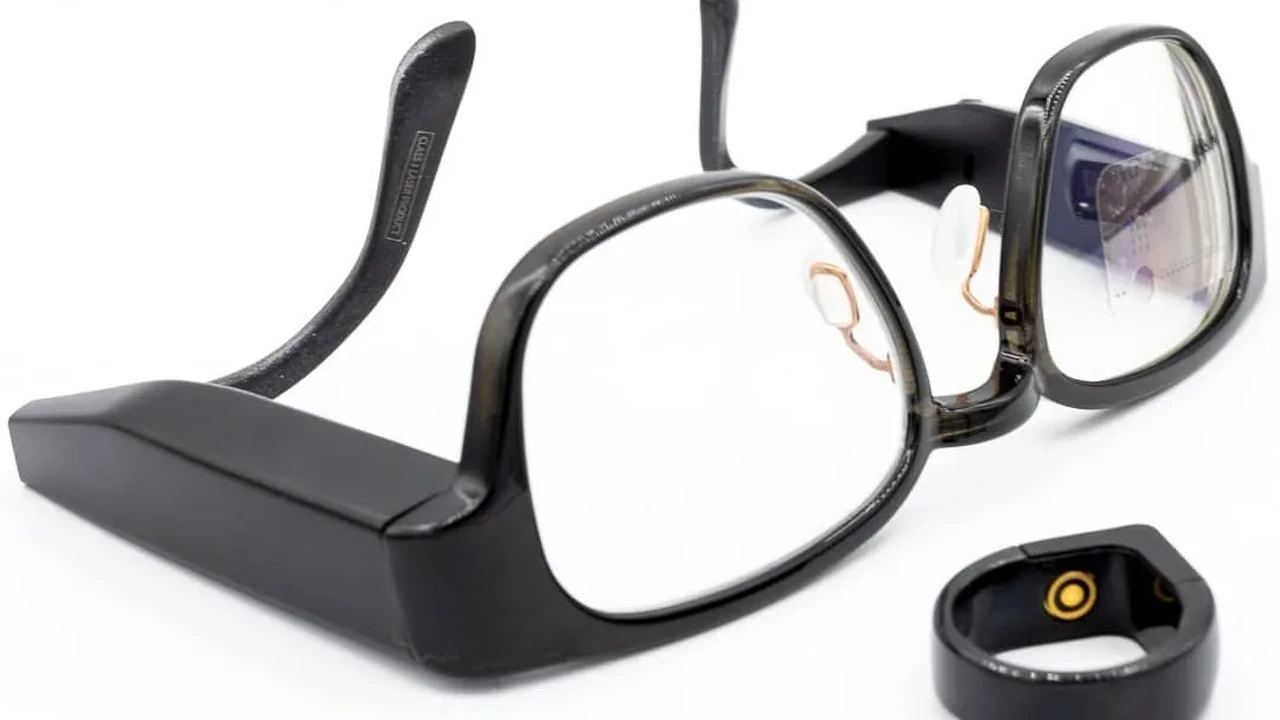Lenovo ThinkReality A3 Review Enterprise AR Solution
An in-depth review of Lenovo ThinkReality A3, highlighting its features as an enterprise AR solution.

Lenovo ThinkReality A3 Review Enterprise AR Solution
Unpacking the Lenovo ThinkReality A3 What is it and Who is it For
Alright, let's talk about the Lenovo ThinkReality A3. If you're in the market for smart glasses, especially for professional or industrial use, this one's probably popped up on your radar. It's not your average consumer gadget; we're talking about a serious piece of enterprise-grade augmented reality (AR) hardware. Lenovo designed the A3 with businesses in mind, aiming to boost productivity, streamline workflows, and provide immersive training experiences. So, if you're a field service technician, an engineer, a factory worker, or even a healthcare professional looking for a hands-free computing solution, the ThinkReality A3 is definitely worth a closer look. It's built to be rugged, versatile, and integrate seamlessly into existing enterprise ecosystems.
Key Features and Specifications of ThinkReality A3 Enterprise AR
What makes the ThinkReality A3 tick? Let's dive into its core features. First off, it's powered by the Qualcomm Snapdragon XR1 Platform, which is a dedicated chip for extended reality (XR) devices. This means it's got the processing power to handle complex AR applications without breaking a sweat. The A3 boasts dual 1080p displays, delivering a crisp and clear visual experience for virtual monitors or overlaid information. It also includes an 8-megapixel RGB camera for high-resolution video and still capture, along with dual fish-eye cameras for room-scale tracking. This allows for precise spatial awareness and interaction within your environment. Connectivity is robust, with USB-C for tethering to a compatible PC or select Motorola smartphones (like the ThinkPhone by Motorola), ensuring a stable and secure connection. The device itself is relatively lightweight, coming in at around 130 grams, which is crucial for extended wear in professional settings. It's also designed to be comfortable, with adjustable nose pads and optional industrial frames for safety glasses integration.
ThinkReality A3 Use Cases Transforming Industries with AR
This is where the ThinkReality A3 really shines – its practical applications across various industries. Imagine a field service technician troubleshooting a complex machine. With the A3, they can overlay digital schematics directly onto the physical equipment, receive remote assistance from an expert who can see exactly what they're seeing, and even get step-by-step instructions projected into their field of view. This significantly reduces downtime and improves first-time fix rates. In manufacturing, workers can use the A3 for assembly guidance, quality control inspections, and even training new employees on intricate procedures. Healthcare professionals can leverage it for remote consultations, surgical planning, and even visualizing patient data in 3D. For engineers and designers, the A3 can provide immersive 3D model visualization, allowing for collaborative design reviews and virtual prototyping. The possibilities are pretty vast, and it's clear Lenovo has put a lot of thought into making this a truly versatile tool for the modern workforce.
Comparing ThinkReality A3 with Other Enterprise AR Solutions
So, how does the ThinkReality A3 stack up against its competitors in the enterprise AR space? Let's look at a few key players. The Microsoft HoloLens 2 is a strong contender, known for its untethered mixed reality experience and robust ecosystem. HoloLens 2 offers a wider field of view and is a completely self-contained unit, meaning no tethering to a PC or phone. However, it typically comes with a significantly higher price tag (around $3,500 USD for the Development Edition, and $4,950 USD for the Industrial Edition) and can be heavier, which might be a factor for all-day wear. The A3's tethered approach allows for a lighter form factor and offloads processing to a more powerful device, potentially offering better performance for certain applications. Another competitor is the Vuzix Blade Upgraded, which is more akin to smart glasses for information overlay rather than full-blown AR. The Vuzix Blade is lighter and more consumer-friendly in its design, but its AR capabilities are more limited, focusing on notifications and basic information display. Its price point is also lower, typically around $999 USD. For more industrial-focused applications, you might also consider the RealWear HMT-1. This device is purpose-built for harsh industrial environments, offering voice-controlled operation and extreme ruggedness. It's not designed for immersive AR visuals like the A3 or HoloLens 2, but rather for hands-free information access and remote assistance in challenging conditions. The RealWear HMT-1 usually retails for around $2,000 USD. The A3 carves out a niche by offering a balance of immersive AR capabilities, a relatively comfortable and lightweight design, and a more accessible price point compared to HoloLens 2, while still being robust enough for enterprise use. Its tethered nature can be a pro or con depending on your specific use case – it allows for more powerful computing and potentially longer battery life (as it draws power from the host device), but also limits mobility compared to untethered solutions.
Pricing and Availability of Lenovo ThinkReality A3
When it comes to getting your hands on the Lenovo ThinkReality A3, it's important to remember this isn't something you'll typically find on Amazon or Best Buy. It's sold through Lenovo's enterprise sales channels and authorized partners. The pricing can vary depending on the specific configuration, the volume of units purchased, and any bundled software or services. Generally, the Lenovo ThinkReality A3 starts at around $1,499 USD for the PC Edition, and the Industrial Edition might be slightly higher due to additional certifications and ruggedization. This price point positions it as a more accessible entry into enterprise AR compared to some of the higher-end untethered solutions like the HoloLens 2. Availability is usually through direct contact with Lenovo sales representatives or their network of business partners. They often work with companies to tailor solutions, including software integration and deployment support, which is a big part of the value proposition for enterprise hardware like this. So, if you're interested, your best bet is to reach out to Lenovo's business solutions team directly to get a quote and discuss your specific needs.
Software Ecosystem and Development for ThinkReality A3
Hardware is only half the story; the software ecosystem is crucial for any enterprise AR solution. The Lenovo ThinkReality A3 leverages the ThinkReality platform, which is Lenovo's overarching AR/VR software suite designed for enterprise deployment. This platform provides tools for device management, application deployment, and data analytics. For developers, the A3 supports standard AR development kits like Unity's AR Foundation and Qualcomm's XR SDK, making it relatively straightforward to port existing AR applications or develop new ones. Lenovo also offers a robust set of APIs and SDKs for deeper integration with enterprise systems. This means companies can build custom applications tailored to their specific workflows, whether it's for remote assistance, training, or data visualization. The ability to integrate with existing enterprise software, like CAD systems, ERPs, or CRM platforms, is a major advantage. Lenovo also partners with various independent software vendors (ISVs) to offer a range of pre-built applications for common enterprise use cases, which can significantly reduce development time for businesses looking for out-of-the-box solutions. This focus on a strong software ecosystem ensures that the A3 isn't just a piece of hardware, but a comprehensive solution for digital transformation.
Comfort and Design Considerations for Extended Wear
Wearing smart glasses for hours on end in a professional environment demands serious attention to comfort and design. Lenovo seems to have taken this to heart with the ThinkReality A3. As mentioned, it's relatively lightweight at 130 grams, which helps reduce strain during prolonged use. The design features adjustable nose pads, allowing users to customize the fit for different face shapes. This is a small but critical detail for comfort. What's really smart is the modular design. The A3 comes with different frame options, including a 'PC Edition' that looks more like traditional glasses and an 'Industrial Edition' that's designed to be more rugged and can even be integrated with prescription safety glasses. This flexibility is a huge plus for industrial settings where safety eyewear is mandatory. The tethered design, while sometimes seen as a drawback, actually contributes to the lighter weight on the head, as the battery and main processing unit are offloaded to the connected device. The cable management is also well thought out, aiming to keep it out of the user's way. Overall, the design prioritizes functionality and user comfort, which is essential for adoption in demanding work environments.
Security and Data Privacy with ThinkReality A3 Enterprise AR
In the enterprise world, security and data privacy are non-negotiable. Lenovo understands this, and the ThinkReality A3 is built with these considerations in mind. Since it's often tethered to a PC or a secure Motorola smartphone, it benefits from the security features of those host devices. The ThinkReality platform itself offers robust device management capabilities, allowing IT administrators to control access, deploy updates, and manage applications securely. Data transmitted through the device can be encrypted, and access to sensitive information can be restricted based on user roles and permissions. For industries dealing with highly sensitive data, like healthcare or defense, these security features are paramount. Lenovo also emphasizes its commitment to data privacy, ensuring that user data collected by the device is handled in compliance with relevant regulations. When evaluating enterprise AR solutions, always dig deep into their security protocols and how they handle your company's proprietary information. The A3's integration within a managed enterprise ecosystem provides a significant layer of security that consumer-grade devices often lack.
The Future Outlook for Lenovo ThinkReality A3 and Enterprise AR
What's next for the Lenovo ThinkReality A3 and the broader enterprise AR landscape? The future looks pretty bright. We can expect continuous improvements in display technology, leading to even higher resolutions and wider fields of view. Processing power will undoubtedly increase, allowing for more complex and realistic AR experiences. Battery life for untethered solutions will improve, and tethered devices like the A3 might see even lighter and more flexible cables. The integration of AI and machine learning will become even more sophisticated, enabling features like predictive maintenance, advanced object recognition, and more intuitive user interfaces. For the A3 specifically, we might see further modularity, perhaps with swappable components or even more specialized industrial attachments. The adoption of 5G will also play a crucial role, enabling faster data transfer for remote assistance and cloud-based AR applications. Lenovo's commitment to the enterprise market suggests they'll continue to evolve the ThinkReality platform, adding more software tools and expanding their partner ecosystem. The trend towards digital transformation in industries means that tools like the ThinkReality A3 will become increasingly indispensable, driving efficiency and innovation across the board. It's an exciting time for enterprise AR, and the A3 is certainly a key player in shaping that future.
:max_bytes(150000):strip_icc()/277019-baked-pork-chops-with-cream-of-mushroom-soup-DDMFS-beauty-4x3-BG-7505-5762b731cf30447d9cbbbbbf387beafa.jpg)





